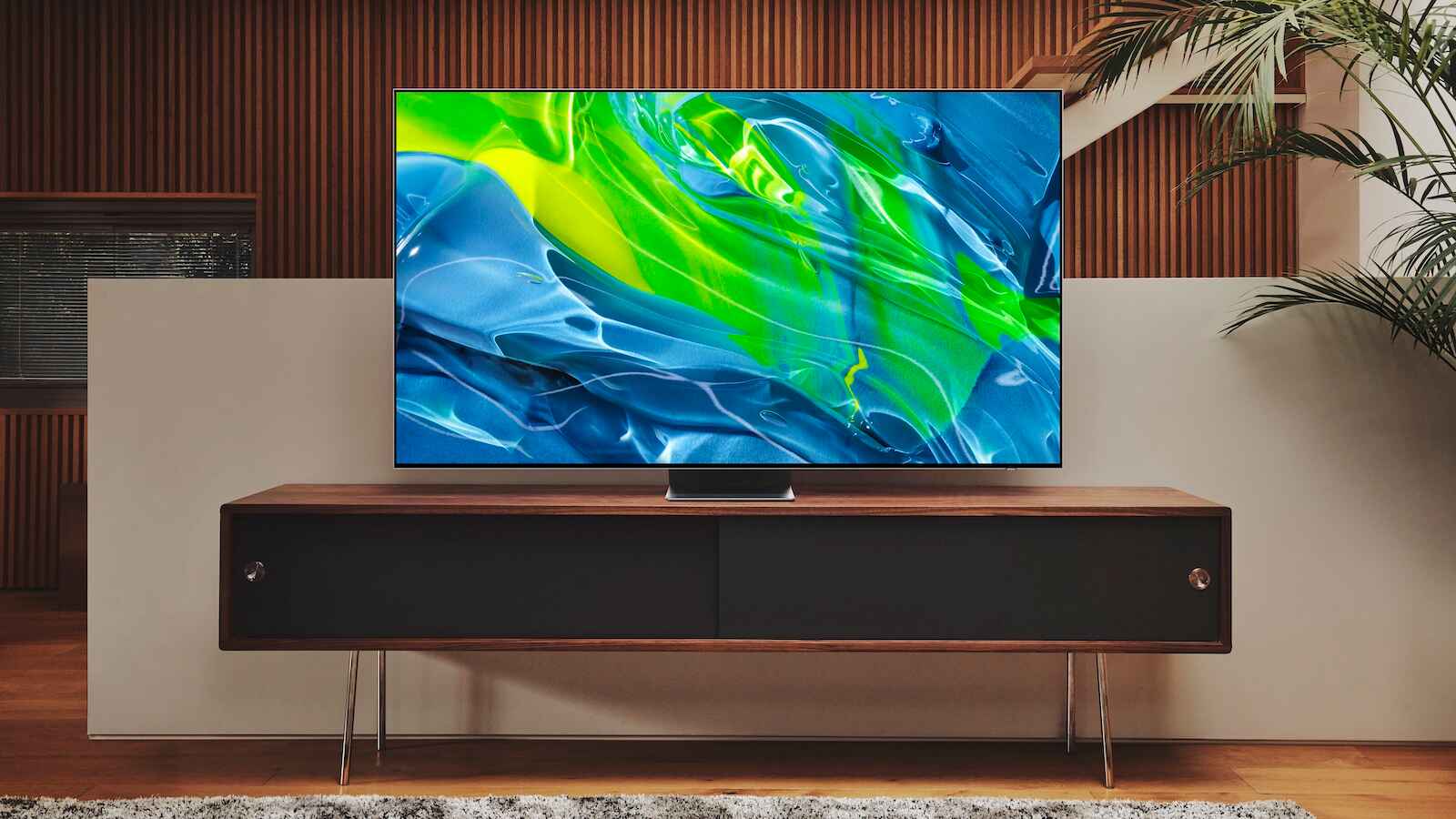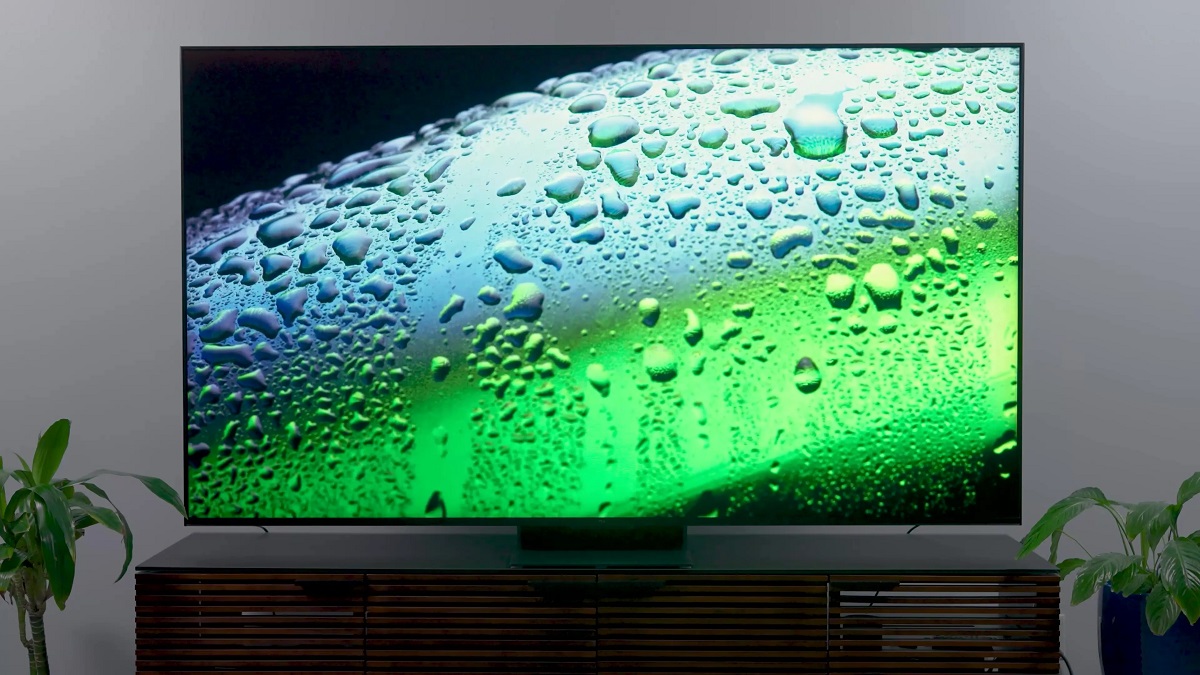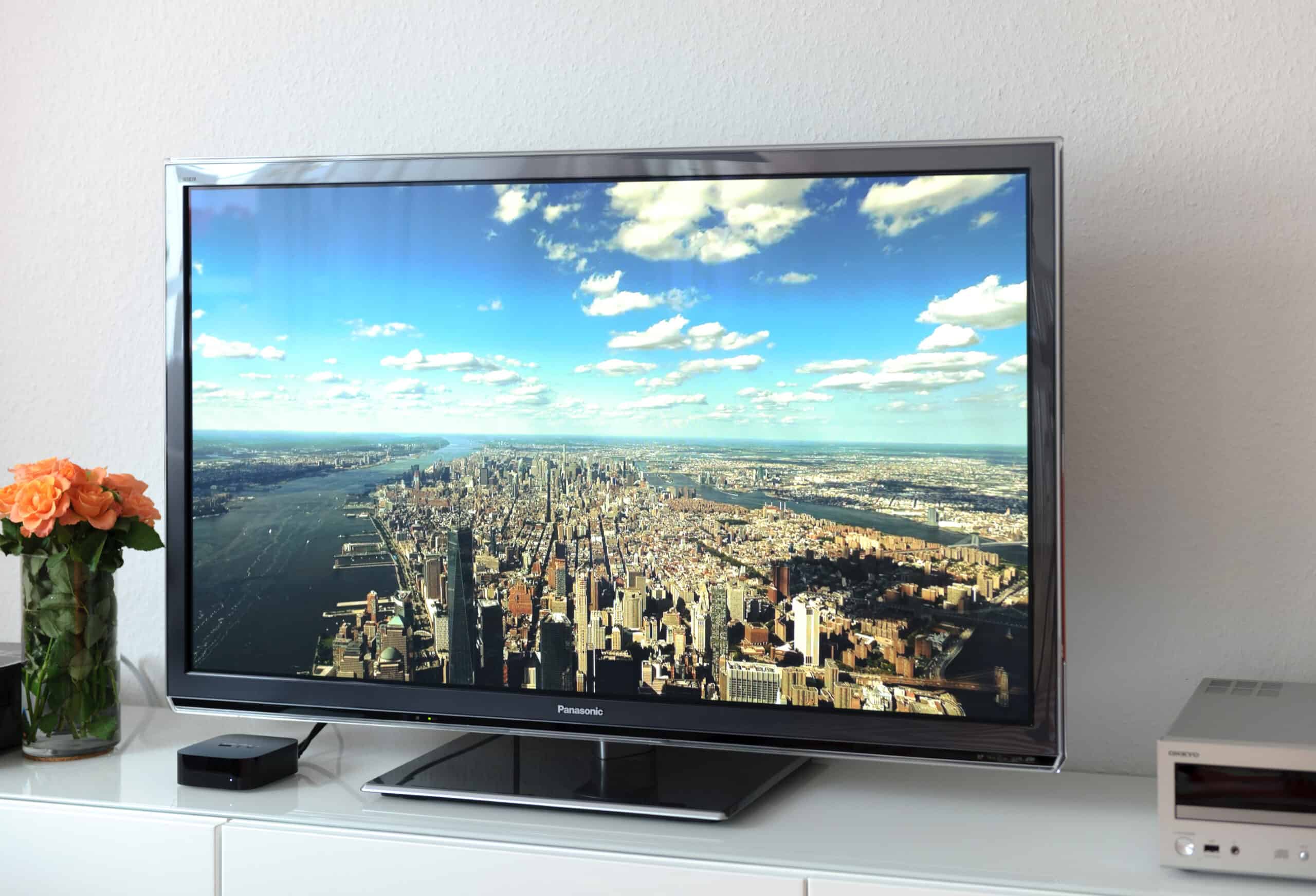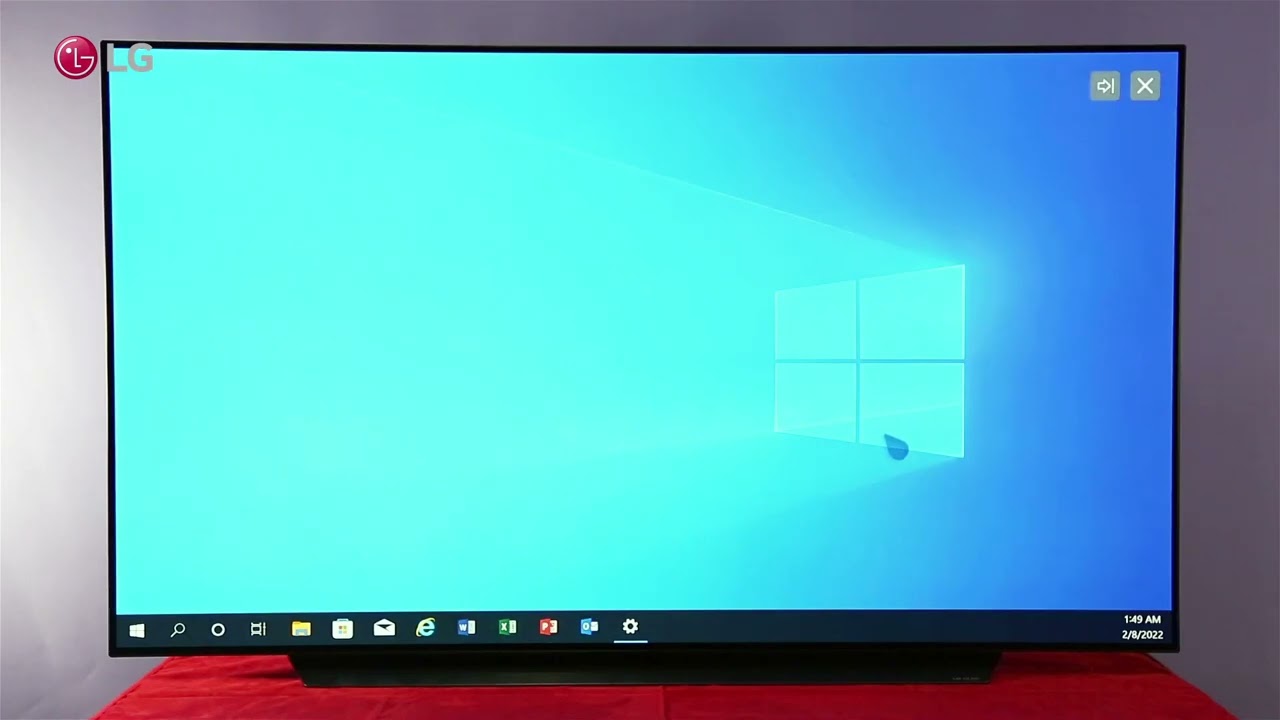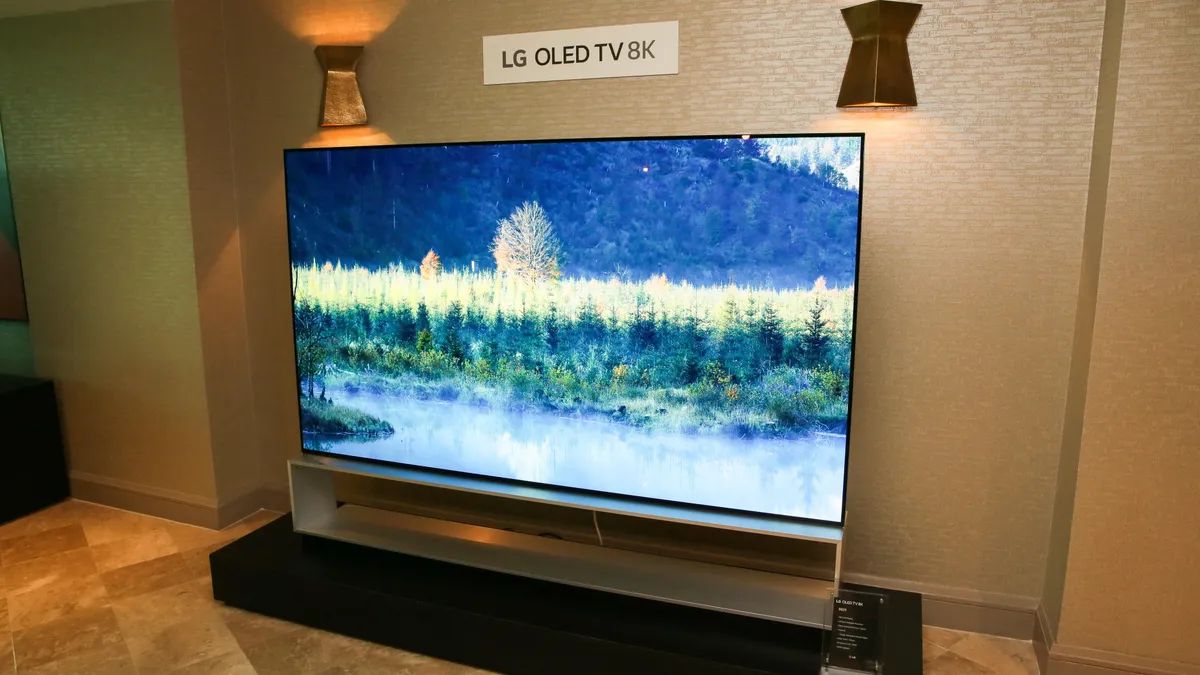Pros of OLED TV
OLED (Organic Light Emitting Diode) TVs have gained significant popularity in recent years, and for good reason. Their impressive display technology offers several advantages that enhance the overall viewing experience. Let’s explore the pros of OLED TV:
- Superior Picture Quality: OLED TVs boast unmatched picture quality. Each pixel produces its own light, resulting in perfect black levels, infinite contrast ratio, and vibrant colors. This exceptional level of detail and depth provides a more immersive viewing experience.
- Wide Color Gamut: OLED displays deliver a wide color gamut, reproducing colors with incredible accuracy. This means that you can enjoy vibrant and lifelike colors, allowing you to truly experience the content as intended by content creators.
- Faster Response Time: OLED panels have an incredibly fast response time, eliminating motion blur and ensuring smoother transitions between frames. This is particularly noticeable during fast-paced action scenes, making OLED TVs ideal for sports enthusiasts and gamers.
- Amazing Viewing Angles: Unlike traditional LCD displays, OLED TVs provide excellent viewing angles, allowing the picture quality to remain consistent even when viewed from the side. This makes OLED TVs perfect for larger rooms or gatherings where viewers are not always directly in front of the screen.
- Thin and Stylish Design: OLED TVs are known for their sleek and slim design. Since OLED panels do not require backlighting, the TVs can be incredibly thin, making them aesthetically pleasing and easy to fit into any living space.
- Energy Efficiency: OLED panels are more energy-efficient compared to traditional LCDs. Since OLED pixels emit their own light, there is no need for energy-consuming backlighting. This not only reduces power consumption but also contributes to a greener and more eco-friendly viewing experience.
These advantages make OLED TVs a top choice for those seeking the ultimate home theater experience. From the impressive picture quality and wide color range to the sleek design and energy efficiency, OLED technology continues to push the boundaries of what’s possible in TV displays.
Cons of OLED TV
While OLED TVs offer exceptional picture quality and numerous benefits, there are a few drawbacks to consider before making a purchasing decision:
- Price: OLED TVs tend to be more expensive compared to their LCD counterparts. This higher price point can be a deterrent for budget-conscious consumers.
- Lifespan: OLED displays have a limited lifespan compared to LCDs. Over time, the organic materials in OLED panels can degrade, causing potential issues such as screen burn-in and reduced brightness. However, it’s worth noting that advancements in OLED technology have helped improve their longevity.
- Burn-In: OLED TVs are susceptible to image retention or burn-in, where static images displayed for extended periods can leave a permanent mark on the screen. While this is a rare occurrence for typical TV usage, it may be a concern for those who plan to use their TVs for extended gaming sessions or as digital signage.
- Lower Brightness in HDR: OLED TVs have slightly lower peak brightness compared to high-end LCD displays. While this doesn’t affect everyday viewing, it can impact the HDR (High Dynamic Range) experience, where extremely bright highlights are desired.
- Power Consumption: Although OLED TVs are generally more energy-efficient during typical content playback, they can consume more power when displaying bright content due to the need for higher pixel illumination.
Despite these drawbacks, it’s important to note that OLED TVs continue to evolve, and many of these issues are being mitigated with advancements in technology. Manufacturers are constantly working to improve OLED panel lifespan, reduce the risk of burn-in, and enhance overall performance.
Ultimately, the decision to invest in an OLED TV will depend on your budget, viewing habits, and personal preferences. It’s advisable to weigh the pros and cons before making a purchase, ensuring that you choose a TV that meets your specific requirements and provides the best viewing experience for you and your family.
OLED TV Lifespan
OLED TVs are known for their exceptional picture quality and innovative display technology. However, one concern often raised by consumers is the lifespan of OLED panels. Let’s explore the lifespan of OLED TVs:
Over time, OLED displays may experience a gradual degradation of the organic materials used to create the pixels. This degradation can lead to a decrease in overall brightness and color accuracy. In the earlier years of OLED technology, there were concerns about the lifespan of OLED panels, with some suggesting that they may not last as long as traditional LCD displays.
However, it is important to note that significant advancements have been made in OLED technology. Manufacturers have implemented various techniques to improve OLED lifespan and minimize the effects of degradation:
- Pixel Refresher: OLED TVs have built-in pixel refreshing algorithms that constantly adjust the pixel brightness and counteract potential image retention or burn-in issues. These algorithms help ensure that the pixels age evenly, extending the lifespan of the display.
- Blue Pixel Degradation: The blue OLED pixels historically had a faster degradation rate compared to red and green pixels. To address this, manufacturers have developed new materials and processes that reduce blue pixel degradation, providing a more balanced and longer-lasting display.
- Aging Compensation: OLED TVs implement aging compensation technology, which adjusts the driving current to compensate for the gradual decrease in brightness over time. This helps maintain consistent picture quality throughout the lifespan of the panel.
While it is difficult to provide an exact lifespan for OLED TVs, many manufacturers now offer warranties that cover any significant drop in brightness over a specific period (typically 5-10 years). Additionally, reports from industry experts suggest that OLED panels can maintain their quality for around 100,000 hours of usage, which translates to over 11 years of continuous usage.
It’s essential to keep in mind that the lifespan of an OLED TV can be influenced by various factors, such as usage patterns, content displayed, and environmental conditions. For example, excessive exposure to static images for extended periods (such as video game HUDs or news tickers) may increase the risk of burn-in.
To maximize the lifespan of an OLED TV, it is advisable to follow manufacturer recommendations for usage, enable pixel shifting or screen savers, and avoid prolonged exposure to static content. Taking these precautions can help ensure that you enjoy your OLED TV for many years to come.
OLED Burn-In
OLED burn-in is a phenomenon that has been a topic of concern among potential OLED TV buyers. Burn-in refers to the permanent retention of an image on the screen, resulting in visible ghost-like artifacts even when the content has changed. Let’s explore OLED burn-in in more detail:
Due to the technology used in OLED displays, each pixel emits its own light. This means that if a static image is displayed on the screen for an extended period, the pixels responsible for that image can age differently compared to the rest of the display. This differential aging can result in burn-in, where the ghost-like image remains visible even after switching to a different content.
It’s important to note that burn-in is a rare occurrence during normal TV viewing, as content is typically dynamic and constantly changing. However, certain usage scenarios, such as leaving the TV on a static image for hours or using it for continuous high-brightness content, may increase the risk of burn-in.
To mitigate the risk of burn-in, manufacturers have implemented various technologies and features:
- Pixel Shifting: OLED TVs often have a pixel-shifting feature enabled by default. This subtle movement of pixels helps prevent static images from being displayed in the same location for extended periods, reducing the risk of burn-in.
- Screen Savers: OLED TVs typically include built-in screen savers that activate after a period of inactivity. These screen savers prevent static images from being displayed for too long, minimizing the chance of burn-in.
- Automatic Brightness Limiter (ABL): OLED TVs employ ABL technology to prevent over-illumination of pixels, which can contribute to burn-in. ABL adjusts the brightness of the display based on the content being displayed to ensure optimal performance and reduce the risk of burn-in.
To further alleviate concerns, OLED TV manufacturers often provide warranties that cover burn-in issues for a specific period. Additionally, many content providers, such as streaming platforms and gaming consoles, have implemented features like screen dimming or logo animation to reduce the risk of burn-in during prolonged usage.
It’s worth noting that advancements in OLED panel technology, including improvements in pixel materials and algorithms, have significantly reduced the occurrence of burn-in. However, it is still important to practice responsible usage by avoiding static content for extended periods and implementing recommended settings and features provided by the TV manufacturer.
By following best practices and exercising caution, the risk of burn-in on OLED TVs can be minimized, allowing you to enjoy the superb picture quality and immersive viewing experience offered by OLED technology.
OLED TV Price
When considering purchasing a new TV, one of the key factors that come into play is the price. OLED TVs, known for their superior picture quality and innovative display technology, often come with a premium price tag. Let’s explore the factors that contribute to the pricing of OLED TVs:
Manufacturing Costs and Materials:
OLED displays require specialty manufacturing processes, including the use of organic materials and intricate pixel structures. These factors contribute to higher production costs compared to traditional LCD displays, consequently impacting the price of OLED TVs.
R&D Investment:
Significant research and development efforts have gone into improving OLED technology. Manufacturers have invested heavily in developing new materials, refining production techniques, and enhancing durability to offer better quality and longer-lasting displays. The costs associated with these advancements are factored into the final price of OLED TVs.
Market Demand and Supply:
As OLED technology continues to gain popularity and market acceptance, the demand for OLED TVs has increased. Limited production capacity and supply constraints can influence the pricing of OLED TVs, particularly in the early stages of their availability.
Size and Features:
Like any TV, the size and additional features of an OLED TV can significantly impact its price. Larger screen sizes tend to cost more due to the higher material and manufacturing costs involved. Similarly, TVs with advanced features such as high refresh rates, HDR support, and Smart TV capabilities can also command a higher price.
Competition:
The level of competition in the TV market can affect the pricing of OLED TVs. In a highly competitive environment, manufacturers may lower the price of their OLED models to attract customers and gain market share. On the other hand, when OLED technology is relatively new and there are limited players in the market, prices may be higher due to the lack of direct competition.
It’s important to note that with advancements in technology and increased manufacturing efficiency, the price of OLED TVs has been gradually declining over the years. While OLED TVs may still be more expensive compared to LCDs, the price gap has become narrower, making OLED technology more accessible to a wider range of consumers.
Ultimately, when considering the price of an OLED TV, it’s essential to weigh it against the perceived value and benefits it offers. If you value exceptional picture quality, vibrant colors, and an immersive viewing experience, the price premium of an OLED TV may be worth it for you.
It’s always a good idea to compare prices from different manufacturers and retailers, take advantage of promotional offers, and consider the long-term value that an OLED TV can provide in terms of enjoyment and satisfaction.
OLED TV Brightness
OLED (Organic Light Emitting Diode) TVs are well-known for their impressive picture quality, including the ability to achieve perfect black levels and infinite contrast ratio. However, one aspect where OLED technology has traditionally lagged behind LCD displays is in peak brightness. Let’s explore the brightness capabilities of OLED TVs:
OLED TVs have made significant strides in brightness performance over the years, but they generally have lower peak brightness compared to high-end LCD displays. The limitation lies in the way OLED technology works. Unlike LCDs, which use a backlight to illuminate the liquid crystals, each pixel on an OLED display emits its own light.
While OLED pixels can produce intense brightness when required, they may not reach the same levels as LCDs due to their self-emissive nature. The brightness of OLED pixels is determined by the amount of current passing through them, with higher currents producing more light. However, there is a limit to how much current can be applied before potential damage or degradation of the organic materials occurs.
It’s worth noting that OLED TVs still provide excellent brightness levels for most viewing scenarios. They can achieve sufficient brightness for everyday content and offer exceptional contrast due to their ability to turn off individual pixels for true black levels.
Additionally, OLED displays excel in displaying small, bright objects against a dark background, as each pixel emits light independently. This results in enhanced detail and a more realistic representation of bright highlights in the content.
While OLED TVs may not achieve the same peak brightness as some high-end LCD displays, it’s important to consider that most content is mastered and optimized for the capabilities of OLED and LCD technology. Viewers typically experience impressive brightness and vibrant colors on OLED TVs when watching movies, TV shows, and gaming content.
As OLED technology continues to evolve, manufacturers are making advancements in panel design and materials to improve brightness levels. Current-generation OLED models offer higher peak brightness compared to their predecessors, and future iterations are expected to further enhance overall brightness performance.
When considering an OLED TV, it’s essential to evaluate your viewing environment and preferences. If you primarily watch content in a dimly lit or controlled lighting environment, the slightly lower peak brightness of OLED may not be a significant concern. However, if you frequently watch TV in a brightly lit room, you may want to consider a high-end LCD display that can deliver brighter images in those conditions.
Ultimately, the brightness level of an OLED TV should be examined in conjunction with other factors such as contrast, color accuracy, and viewing angles to determine if it meets your specific needs and provides an enjoyable viewing experience.
OLED TV Image Retention
OLED TVs offer exceptional picture quality and vibrant colors thanks to their self-emitting pixels. However, a concern often associated with OLED technology is the possibility of image retention, also known as temporary image persistence or ghosting. Let’s explore OLED TV image retention in more detail:
Image retention occurs when a static image is displayed on the screen for an extended period, causing a temporary retention of the image even after the content has changed. It is important to differentiate image retention from burn-in, as image retention is a temporary condition that typically disappears after a short period of usage or when new content is displayed.
OLED TVs address image retention through various built-in technologies:
- Pixel Refresher: OLED TVs feature a pixel refresher mechanism that automatically runs in the background during periods of inactivity or when the TV is turned off. This pixel refresher helps minimize the risk of image retention by subtly adjusting the pixel voltages to ensure uniform aging across the panel.
- Screen Shift: OLED TVs also utilize a screen shifting technique that slightly moves the screen content in a random pattern to prevent static images from being displayed in the same location for extended periods. This helps distribute pixel usage evenly and reduce the likelihood of image retention.
- Screen Burn Protection: OLED TVs typically come with built-in safeguards to prevent long-term burn-in. These include automatic brightness adjustments, screen savers, and pixel-dimming algorithms that can help mitigate the effects of image retention and minimize the risk of permanent damage to the display.
Furthermore, it’s important to note that image retention is less likely to occur during normal TV viewing, as content is generally dynamic and constantly changing. Factors such as prolonged usage of static content, high-contrast images, or high screen brightness increase the potential for temporary image persistence.
If image retention is visible, you can take a few simple steps to reduce its impact:
- Display Diverse Content: Avoid displaying static or high-contrast images for an extended period. When possible, vary the content to ensure a mix of colors, brightness levels, and motion.
- Use Screen Savers: Enable screen saver features or activate sleep mode when the TV is not in use for an extended time. This can help prevent prolonged exposure to static content, reducing the risk of image retention.
- Adjust Screen Brightness: Use recommended brightness settings suitable for your viewing environment. Lowering the brightness slightly can help reduce the likelihood of image retention.
- Allow for Periods of Rest: If you notice any image retention, simply watch varied content for a period of time to allow the pixels to refresh and restore their original state.
OLED TV manufacturers are constantly improving image retention prevention techniques through firmware updates and enhanced panel designs. As a result, the occurrence of image retention is becoming less common with each new generation of OLED displays.
By following best practices, utilizing the built-in safeguards, and understanding the temporary nature of image retention, you can enjoy the stunning picture quality of OLED TVs without significant concerns about image persistence.
OLED TV Viewing Angles
One of the significant advantages of OLED (Organic Light Emitting Diode) technology is its excellent viewing angles. Unlike traditional LCD displays, where the picture quality can deteriorate when viewed from an angle, OLED TVs provide consistent and accurate colors from virtually any viewing position. Let’s explore the viewing angles of OLED TVs:
OLED panels use self-emissive pixels that emit light individually. This means that each pixel produces its own light, resulting in a highly wide and consistent viewing angle. Unlike LCDs, which rely on a backlight that can cause light to scatter and reduce clarity at off-axis viewing angles, OLED pixels deliver uniform brightness and color accuracy throughout the display.
With OLED TVs, you can sit off to the side or view the TV from an angle without experiencing a significant loss in picture quality. This is particularly beneficial for larger rooms or social gatherings where the audience may not always be sitting directly in front of the television.
Even when viewed from extreme angles, OLED TVs maintain excellent color saturation, contrast, and detail. The image quality does not diminish, making OLED displays a suitable choice for multi-viewer scenarios or living arrangements where seating positions are not centered.
Another advantage of OLED technology is its ability to retain image quality when viewed in dimly lit or dark environments. The perfect black levels achieved by OLED panels enhance the overall viewing experience by improving contrast ratios and providing better depth and detail.
It’s important to note that while OLED TVs boast exceptional viewing angles, there may still be slight variations in brightness and color accuracy when viewed from extreme angles. However, these variations are minimal compared to LCD displays and do not significantly impact the overall viewing experience.
The wide viewing angles of OLED TVs are particularly beneficial for home theater setups, where viewers are often seated at different locations and angles within the room. Whether you’re watching a movie with friends or enjoying a family TV show, everyone can have an immersive and enjoyable viewing experience without compromising on picture quality.
Additionally, the excellent viewing angles of OLED TVs make them ideal for gaming. Whether you’re playing games alone or engaging in multiplayer sessions with friends, you can expect consistent visual performance and accuracy, regardless of your seating position.
It’s important to consider the size of the OLED TV when evaluating the viewing angles. Larger screens may still have slightly reduced clarity when viewed from extreme angles, but the overall performance remains superior compared to LCD panels.
Overall, OLED TVs offer wide and consistent viewing angles, adding to the versatility and flexibility of their placement and usage. Whether you’re watching TV shows, movies, or playing games, you can count on OLED technology to deliver impressive and vibrant visuals from virtually any viewing position in the room.
OLED TV Power Consumption
Power consumption is an important consideration when it comes to choosing a new TV. OLED (Organic Light Emitting Diode) TVs are known for their energy-efficient nature compared to traditional LCD displays. Let’s explore the power consumption of OLED TVs:
One of the main factors contributing to the energy efficiency of OLED TVs is their individual pixel illumination. OLED panels do not require a separate backlighting system, unlike LCD displays. Each pixel in an OLED TV emits its own light, allowing for precise control of brightness levels.
Since OLED pixels can be turned completely off to achieve perfect black levels, OLED TVs consume less power when displaying dark scenes or content with predominantly black backgrounds. In contrast, LCD displays, which rely on backlighting, must constantly illuminate the entire screen, resulting in higher power consumption even during dark scenes.
OLED TVs demonstrate energy efficiency during typical content playback, as they only consume power for the illuminated pixels needed to display the content. For example, in a scene with a bright object against a dark background, only the pixels required to render the bright object are illuminated, while the rest remain off.
Additionally, OLED panels have faster response times compared to LCD displays, which can further contribute to energy efficiency. With faster response times, motion blur is minimized, resulting in sharper images and reducing the need for image processing that consumes additional power.
It’s worth noting that OLED TVs can consume more power when displaying bright content or scenes, as more pixels need to be illuminated. However, the overall power consumption remains efficient compared to LCD displays, especially during typical TV viewing.
In terms of energy efficiency, OLED technology aligns well with environmental considerations. The reduced power consumption of OLED TVs not only results in cost savings for users but also contributes to reduced energy consumption and a greener footprint.
Manufacturers have also incorporated additional features to optimize power usage:
- Automatic Brightness Control: OLED TVs often include automatic brightness control features that adjust the screen brightness based on the ambient light conditions. This ensures optimal viewing while minimizing power consumption.
- Energy-Saving Modes: OLED TVs come with power-saving modes that automatically dim the screen or switch to a lower power state when the TV is idle for a specific period. These modes further optimize energy usage when not actively watching content.
It’s important to consider that power consumption can vary among different OLED TV models and brands. To compare power consumption, look for the TV’s Energy Rating label or check the manufacturer’s specifications for power usage information.
While OLED TVs are generally more energy-efficient compared to LCD displays, power consumption ultimately depends on various factors, including screen size, content being displayed, brightness settings, and user habits. However, OLED technology’s inherent advantages make it an appealing choice for those seeking both superior picture quality and energy efficiency in their TVs.
OLED TV Technology Advancements
OLED (Organic Light Emitting Diode) technology continues to evolve and improve, offering even more impressive features and advancements in the world of television displays. Let’s explore some of the significant OLED TV technology advancements:
Improved Brightness: OLED panels have seen significant advancements in brightness levels over the years. With each new generation, OLED TVs are able to achieve higher peak brightness, making them even more competitive with high-end LCD displays. This improvement enhances HDR (High Dynamic Range) content and ensures a more immersive viewing experience.
Enhanced Lifespan: OLED TVs have undergone improvements in terms of overall lifespan. Manufacturers have implemented technologies like pixel-refreshing algorithms and aging compensation to mitigate the effects of organic material degradation and maintain picture quality over a longer period. These advancements have increased the durability and longevity of OLED displays.
Reduced Risk of Burn-In: Burn-in has been a concern for OLED technology, especially with static images displayed for extended periods. However, manufacturers have made significant strides in reducing the risk of burn-in through various techniques. These include pixel shifting, screen savers, and automatic brightness limiters that help prevent the persistence of static images and reduce the likelihood of permanent retention.
Improved Color Accuracy: OLED displays are known for their vibrant and accurate colors. With technology advancements, OLED TVs have become even more proficient at reproducing colors with precision. Manufacturers have refined color management systems and implemented high color bit depths to deliver richer, more lifelike hues on screen.
Smaller Pixel Structures: Advances in manufacturing have allowed for smaller OLED pixel structures. This miniaturization improves pixel density, resulting in sharper images, finer details, and reduced visibility of pixel structure when viewing the screen up close. It enhances the overall quality and clarity of the displayed content.
Increased Panel Sizes: OLED panels have expanded in size range, offering larger options for consumers. While OLED TVs were initially limited to smaller sizes, manufacturers have made significant progress in scaling up production and offering larger screen sizes, making OLED technology more accessible for home theater setups and larger viewing areas.
Better Energy Efficiency: OLED technology inherently consumes less power compared to traditional LCD displays due to its self-emissive nature. However, manufacturers have continued to refine energy-saving features and optimize power consumption in OLED TVs. Automatic brightness control, energy-saving modes, and advanced power management systems help maximize energy efficiency without compromising picture quality.
These technology advancements have made OLED TVs more impressive than ever, offering stunning picture quality, vibrant colors, wide viewing angles, and enhanced durability. As OLED technology continues to progress, it presents exciting possibilities for the future of television displays.
It’s important to keep in mind that technology advancements may vary among manufacturers and models. When considering an OLED TV, it’s recommended to research the specifications and features offered by different brands to ensure you select a TV that aligns with your preferences and requirements.
OLED TV Future Prospects
The future of OLED (Organic Light Emitting Diode) TVs is filled with promising prospects as manufacturers strive to push the boundaries of display technology. Let’s explore some of the potential future advancements and developments for OLED TVs:
Increasing Brightness: OLED TVs have already seen improvements in brightness levels over the years, but further advancements are expected. With ongoing research and development, manufacturers aim to enhance peak brightness even more, delivering brighter images for an even more dynamic HDR (High Dynamic Range) viewing experience.
Improved Lifespan and Durability: As OLED technology matures, manufacturers continue to focus on increasing the overall lifespan of OLED panels. By refining the materials, optimizing pixel structures, and implementing advanced pixel aging compensation techniques, future OLED displays are expected to have even longer lifespans and increased durability.
Reduced Risk of Burn-In: Future OLED panels are likely to feature enhanced technologies to further mitigate the risk of burn-in. Manufacturers will continue to refine pixel shifting algorithms, introduce even better screen savers, and implement advanced image processing techniques to reduce the occurrence of static image retention and burn-in issues.
Advancements in Color Accuracy: OLED technology already provides impressive color accuracy, but future OLED TVs are expected to offer even more refined color reproduction. With improved color management systems, wider color gamuts, and higher bit depths, OLED displays will become capable of producing even more vibrant and true-to-life colors.
Increased Panel Sizes: As manufacturing processes continue to advance, larger OLED panels will become more accessible and cost-effective. This will enable the production of OLED TVs in even larger screen sizes, catering to consumers who desire a more immersive and cinematic viewing experience in their home theaters.
Flexible and Rollable OLED Displays: One of the most exciting prospects for OLED technology is the potential for flexible and rollable displays. OLED panels can be constructed on flexible substrates, enabling the creation of curved screens, foldable devices, and even rollable TVs. This opens up possibilities for innovative form factors and new ways to integrate displays into our everyday lives.
Improved Energy Efficiency: OLED displays are already energy-efficient, but future advancements will continue to optimize power consumption. Manufacturers will refine power management systems, introduce new energy-saving technologies, and implement advanced algorithms to ensure maximum energy efficiency without compromising on picture quality.
Integration with Advanced Technologies: OLED TVs will likely continue to integrate with other advanced technologies such as artificial intelligence (AI), augmented reality (AR), and virtual reality (VR). This integration will further enhance the overall viewing experience, enabling features such as intelligent upscaling, interactive content, and immersive gaming.
While these prospects demonstrate the potential for OLED TV technology, it’s important to note that advancements may take time to manifest in commercial products. The availability of future OLED TV features will depend on the pace of research, development, and manufacturing processes.
As OLED technology continues to evolve, consumers can look forward to even more breathtaking picture quality, improved longevity, enhanced energy efficiency, and exciting form factors that usher in a new era of home entertainment.
Conclusion
OLED (Organic Light Emitting Diode) TVs have revolutionized the television industry with their unparalleled picture quality, vibrant colors, wide viewing angles, and sleek design. Throughout this article, we have explored the pros and cons of OLED TVs, their lifespan, burn-in concerns, pricing factors, brightness capabilities, image retention, viewing angles, power consumption, technological advancements, and future prospects.
OLED technology continues to push the boundaries of what’s possible in TV displays. Advancements in brightness, image retention prevention, color accuracy, and energy efficiency have made OLED TVs even more appealing to consumers. In addition, the increasing availability of larger screen sizes, flexible displays, and integration with advanced technologies like AI and AR opens up exciting possibilities for the future.
It’s important to note that while OLED TVs offer many advantages, there are some considerations to keep in mind, such as potential burn-in risks and higher price points compared to traditional LCD displays. However, manufacturers have made significant progress in mitigating these concerns through technological innovations and preventive measures.
Ultimately, the choice to invest in an OLED TV depends on individual preferences, viewing habits, and budget. OLED technology delivers stunning visuals, accurate colors, and immersive viewing experiences, making it an excellent option for those seeking the best picture quality available.
As OLED technology continues to evolve, it’s advisable to stay updated with the latest advancements and research before making a purchasing decision. Consider factors such as size requirements, desired features, usage patterns, and the total cost of ownership.
With each innovation and improvement, OLED TVs are becoming more refined and accessible to a wider range of consumers. Whether you’re a movie enthusiast, a gaming fanatic, or simply looking to elevate your home entertainment experience, OLED TVs have the potential to provide a visual feast and an immersive journey.
As you explore the world of OLED technology, consider finding the perfect OLED TV that suits your needs and brings your favorite content to life with stunning clarity, vibrant colors, and an unforgettable viewing experience.







